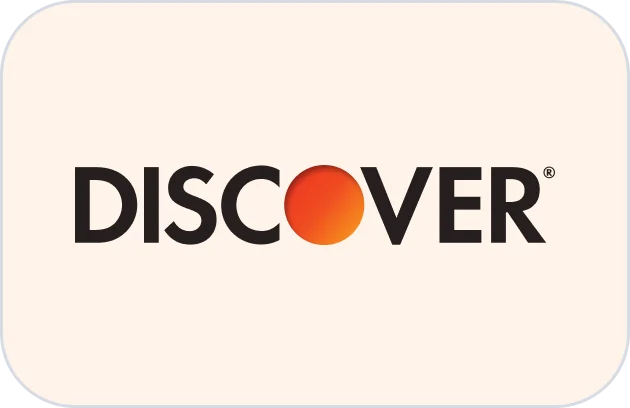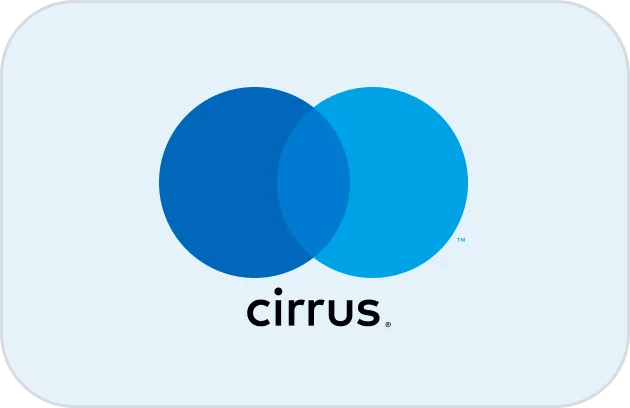If you run a modern contact operation, you don’t need another “features” page, you need a system that stops the bleeding.
The right call center software ends missed calls, shortens queues, prevents agent burnout, and replaces spreadsheet-guesswork with clean, real-time reporting.
Consider this guide your field manual. We’ll deconstruct the stack — routing, dialers, coaching, AI, analytics, security, global scale — and show how to turn chaos into a predictable, revenue-producing machine. Throughout, you’ll see how a platform like ActiveCalls implements these moves without drama—so you win faster, and sleep better.
1) The Problems Worth Solving (and the Only KPIs That Matter)
You don’t fix call centers by buying software; you fix them by killing the right problems in the right order. That means mapping pains to business-visible metrics and enforcing a weekly operating cadence.
The three core pains
-
Missed calls / long waits → Low Service Level (SL), high Abandon Rate, poor First Call Resolution (FCR).
-
Agent burnout / inconsistency → High AHT for the wrong reasons (fumbling), low Occupancy (idle + wait), weak Adherence.
-
Broken reporting / no accountability → Fragmented data; leaders can’t tie contacts → outcomes → revenue.
KPIs that actually drive outcomes
-
Service Level (SL): % of calls answered within X seconds (e.g., 80/20). Fixes perceived speed.
-
Abandon Rate: % callers who hang up before answer. Keep under 5–8% where volume allows.
-
FCR: % issues solved on first contact. FCR > 70% usually correlates with rising CSAT and falling costs.
-
ASA / AHT: ASA (Average Speed to Answer) shows queue health; AHT should fall only when quality doesn’t suffer.
-
Occupancy & Adherence: Agents engaged (not overloaded), and following schedule.
-
Disposition → Outcome: Map every interaction to next-step revenue or resolution. No “miscellaneous” buckets.
Weekly cadence that makes numbers move
-
Mon: Publish last week’s SL/Abandon/FCR by queue; call out 3 wins and 3 risks.
-
Tue: Coaching sprint (barge/whisper) targeting AHT outliers and common failure points.
-
Wed: Routing/dialer/pacing tweaks based on live data.
-
Thu: QA calibration (5 calls/agent) + refresh scripts where friction appears.
-
Fri: Pipeline & CSAT review; lock the following week’s hypothesis and staffing plan.
How ActiveCalls helps: queues and WebRTC softphone instrument your KPIs out-of-the-box; call dispositions map to CRM objects so every contact rolls up to pipeline or resolution.
Call Center Fix Matrix — Problems → Metrics → Root Causes → Fast Wins (ActiveCalls)
Use this to diagnose and fix the biggest revenue/experience leaks in hours, not months.
| Problem | Metric to Check | Root Cause & Fast Fix |
|---|---|---|
| High Abandon Rate | Abandon% by 15–30-min interval | Understaffed peaks; deep IVR; long ASA → callback-when-busy + interval staffing |
| Agent Burnout | Occupancy%, Adherence | Uneven load; no micro-breaks → pacing + enforced breaks → ↓ attrition |
| Broken Reporting | Reproducibility across layers | No event model/IDs → standardize (Start/Connect/Transfer/Wrap/Disposition) + webhooks |
| Low Connect Rate (OB) | Connect% by hour/campaign | Wrong dial mode/time; spam labels → switch Predictive/Power/Preview + rotate verified CLIs + STIR/SHAKEN |
| Low First-Call Resolution | FCR%, repeat in 7 days | Knowledge gaps; routing → intent routing + snippet library + weekly coaching |
| AHT Too High | AHT variance by agent/intent | Process drift; wrap bloat → checklists + AI summaries + hotkey wraps |
| Spam/Scam Labeling | Connect% vs new CLIs | Overused numbers; no attestation → register CLIs; maintain A-attestation; rotate |
| IVR Drop-offs | Containment%, drop rate | Too many layers/jargon → 2-layer IVR; task words; “0 for agent” |
| Supervisor Blind Spots | % calls monitored; time-to-coach | No whisper/barge/alerts → live listen + whisper/barge + intent alerts |
| Missed SLA (Peaks) | ASA vs interval; staffing plan | Static schedules; no surge plan → surge profiles; overflow queues; callbacks |
| Low CSAT on Resolved | CSAT by intent/agent | Tone/ownership gaps → micro-scripts: empathy→solution→next step; weekly calibration |
| Adherence Slips | Adherence%, shrinkage | No guardrails → realtime adherence alerts; auto status rules |
| Queue Hopping | Transfer% by intent | Poor intent mapping; skills mismatch → skill-based routing + intent tags |
| Wrap Time Bloat | ACW per intent/agent | Free-text notes; no hotkeys → AI call summary + hotkey dispositions |
| Compliance Risk | Redaction coverage% | Manual pause; human error → auto pause/resume; field-level redaction; RBAC |
| International Audio | MOS, jitter, packet loss | Single carrier; far media → POP selection; carrier diversity; WebRTC tuning |
| Meetings Not Booked | Connect→Meeting rate | Wrong mode; no CTAs → Preview on high-value; in-call calendar link; post-call SMS |
| Backlog (Same Issues) | Topic-cluster volume | Upstream policy/process gaps → share transcript topics weekly; fix top 5 |
| Number Blocks/Flags | Block reports; CLI health | High attempts/CLI → throttle attempts; pool & rotate verified CLIs |
| QA Backlog | QA coverage% | Manual sampling; heavy rubrics → auto sample by risk; 5-behavior rubric; AI pre-scores |
| Unclear Cost Drivers | Minutes/Seats/Channels by LOB | No departmental tagging → attribution by dept + alerts |
| On-Prem → Cloud Hesitation | Pilot MOS & checklist | No phased plan → 2-wk pilot → parallel run → wave ports + rollback |
| Knowledge Drift | Article usage; handle variance | Outdated snippets; no owners → assign owners; refresh weekly from QA |
| After-Hours Gaps | After-hours service level | No follow-the-sun; static IVR → time-based routing; on-call groups; VM→ticket |
| Recording Overages | Retention by intent/compliance | One-size retention → tiered retention; cold archive; tag search |
| Agent Attrition Loop | Turnover%, OT% | Low morale → gamified KPIs; progression ladders; recognition |
| Scripting Drift | Handle-time variance | Old scripts → single-page micro-scripts; A/B weekly |
| Disposition Chaos | Disposition entropy | Too many codes → 12-code set; hotkeys; QA feedback loop |
2) Architecture & Reliability: From Browser to Carrier (The Zero-Excuses Stack)
Great routing on a bad foundation is lipstick on a server rack. You need clean audio, stable sessions, and predictable failover.
The signal path that doesn’t fail
-
WebRTC softphone in the browser (or desktop app) → SBC (Session Border Controller) → SIP to carriers → PSTN/VoIP endpoints.
-
QoS on local networks prioritizes voice over bulk traffic.
-
Adaptive jitter buffers stabilize poor links; packet loss concealment masks brief drops.
Codecs & MOS
-
Use Opus where possible (WebRTC) for high quality at lower bitrates; G.711 for traditional SIP paths.
-
Track MOS (Mean Opinion Score). Sustained MOS < 3.6 is a production issue—not a “we’ll check later.”
Redundancy that’s actually redundant
-
Multi-region infrastructure with active-active edges.
-
Carrier diversity: if Carrier A flutters, selective failover to B in seconds.
-
Number pools per region to avoid single-carrier lock-in.
-
SIP Options/health checks; automatic route re-selection.
Device & network realities
-
Approved headsets, noise-cancelling mics, and echo cancellation baked into the app.
-
Edge cases: LTE hotspots for WFH redundancy; push a “Network Health” widget right into the agent UI.
How ActiveCalls helps: 99.8%+ uptime, multi-carrier routes, region-aware edges, and real-time call quality telemetry so ops sees MOS/jitter/loss per session, not just after the fact.
3) Routing & Throughput: The Engine That Ends Missed Calls
Routing determines who picks up, how quickly, and with what context. Your call center software must give you fine-grained control without turning you into a PBX administrator.
IVR and ACD that prevent queue disasters
-
Intent-first IVR: Fewer menus, smarter wording. “Sales,” “Support,” “Billing” should represent work types, not your org chart.
-
Skills-based ACD: Route by language, product line, and current backlog. Priority queues escalate revenue-critical intents.
-
Sticky routing for relationship continuity, with time-boxed fallbacks to avoid spirals.
Queue disciplines to know
-
Longest Idle for fairness; Best Skill Match for quality; Hybrid when volume spikes.
-
Callback offers when ASA > threshold; present real windows (not “we’ll call later”).
-
Max queue size caps—better to offer callback than create 25-minute waits.
Outbound throughput (auto dialers that don’t burn lists)
-
Predictive vs Power vs Preview: predictive for high-volume campaigns; power for steady connect rates; preview for high-value calls.
-
Pacing controls: adjust lines-per-agent based on real-time connect rates, not set-and-forget.
-
Local presence with compliance (STIR/SHAKEN) to avoid spam labeling.
-
Recycle rules: time-of-day, max attempts, spaced retries.
Schedules and WFM basics
-
Interval staffing: build 30-min interval forecasts from historical arrival patterns; schedule to target SL.
-
Shrinkage accounting: breaks, meetings, training, absence—budget 25–35% depending on org.
-
Real-time adherence: surface deviations to team leads, not buried in a report no one opens.
How ActiveCalls helps: skills, priorities, queue callbacks, and all four dialer modes (preview/power/progressive/predictive), with per-campaign pacing and DNC/stir-shaken guardrails.
42% of leaders cited this as the biggest revenue drain.
Avg. impact: $1.2M–$3.4M in lost annual revenue.
35% report high turnover and rising AHT.
Avg. impact: +18% labor cost inflation.
31% struggle to tie contacts → revenue.
Avg. impact: 5–10% missed SLA penalties.
28% see repeat calls drive 22% of total inbound.
Avg. impact: higher handle time and agent fatigue.
22% cite QA overhead + compliance risk.
Avg. impact: $200K+ yearly in manual review effort.
19% lose throughput due to misaligned pacing.
Avg. impact: 15–25% lower connect rates.
16% lack unified scripts or snippet refresh.
Avg. impact: −10 CSAT points across cohorts.
15% have containment <18% vs target 35%.
Avg. impact: +40s avg. queue time.
13% lose productivity to missed intervals.
Avg. impact: −2.5 productive hours per agent/week.
11% still audit manually without AI assist.
Avg. impact: delayed feedback loops + low morale.
4) Coaching, QA & AI that Actually Move Metrics (Not Buzz)
AI doesn’t fix teams by itself; coaching frequency and QA clarity do. Use software to make better behavior easier.
Live coaching that agents accept
-
Whisper / Barge-in for timely intervention.
-
Real-time prompts: surface next best action (“Verify email,” “Offer partial credit,” “Escalate tag”) based on intent + customer record.
-
On-call checklists inside the UI: open/close steps that directly tie to FCR and compliance.
QA that causes improvement, not resentment
-
Replace generic 30-point scorecards with task-based rubrics: Greeting, Discovery, Resolution, Next Step, Compliance.
-
Calibration sessions weekly: reviewers score the same 5 calls, then align.
-
Track coached-this-week %; managers must hit a floor (e.g., 80% of agents coached weekly).
AI where it pays its rent
-
Auto-summaries with reason-for-contact, resolution code, and follow-up stamped to CRM.
-
Silence, overlap, and sentiment signals for targeted coaching.
-
Topic clustering of transcripts: find the 5 issues causing 60% of calls, fix upstream content/policy.
Script & objection library that adapts
-
Central library by product/intent; A/B test versions by cohort.
-
Copy-to-clipboard speed; tag snippets by “high CSAT” or “high FCR.”
How ActiveCalls helps: inline coach tools, AI summaries pushed to CRM/ticket, and QA scorecards tied to objective events (did we verify identity? did we provide next-step?).
5) Analytics, Data Model & RevOps: Proof or It Didn’t Happen
Reporting isn’t about charts; it’s about changing behavior and allocating budgets.
The dashboards that matter
-
Executive view: SL/Abandon/FCR by queue; cost/contact; revenue/contact; NPS/CSAT trend; escalations trend.
-
Ops view: Interval-level ASA/AHT/Occupancy; agent adherence; callback performance; transfer reasons.
-
Team lead view: Coach list, QA scores, outliers; “calls needing review today.”
A data model that won’t betray you
-
Event schema: CallStarted, Connected, Transferred, Wrapped, Dispositioned.
-
Entity joins: Agent, Queue, Campaign, Customer, Case/Deal.
-
Attribution: Connect disposition → CRM object (ticket resolved, opportunity created, payment collected).
-
Cohort analysis: Compare first-time callers vs repeat; new campaigns vs legacy; coached vs uncoached.
Revenue instrumentation
-
For Sales: Meetings/Deals created per 100 connects, conversion by agent/cadence.
-
For Support: Cost/contact vs self-service deflection, churn save rates, warranty claim reductions.
-
For Collections: Promise-to-Pay kept, days-to-cash by cadence.
How ActiveCalls helps: native CDRs, disposition mapping, and CRM connectors (HubSpot/Salesforce/Zendesk) so the exec dashboard connects voice → outcomes without CSV acrobatics.

6) Security, Compliance & Global Scale Without Headaches
If your software can’t pass security review or scale globally, it’s a hobby. You need defensible controls and no-drama expansion.
Compliance that keeps auditors bored
-
PCI-DSS: Pause/resume or redact recordings around card capture; segregated storage; access logs.
-
HIPAA: Encryption at rest/in transit; BAAs; minimum necessary access; ePHI tagging.
-
GDPR: Lawful basis; consent for recordings; data retention & right-to-be-forgotten; data residency options.
-
TCPA / DNC: Respect national registries; safe call windows; opt-out logging; STIR/SHAKEN to reduce spam labels.
Security essentials
-
TLS/SRTP encryption; rotating keys; SSO/SAML; role-based access; audit trails on every sensitive action.
-
Least privilege defaults; separate recording keys and runtime keys; incident response runbook.
Global numbers, local trust, real uptime
-
Number provisioning across regions; geo-aware routing; local CLIs where lawful.
-
Follow-the-sun staffing with queue schedules by timezone.
-
Disaster recovery: region failover tabletop tested; continuity for callbacks and voicemails.
How ActiveCalls helps: 24/7 support, multi-region routing, carrier diversity, encryption, and compliance tooling (pause/resume, retention policies, access logs) that pass enterprise scrutiny.
Call Center Software (Frequently Asked Questions)
1. How do I cut Abandon Rate under 5% without tripling headcount?
Start by profiling arrivals in 15–30 minute intervals and align staffing to peaks (interval scheduling). Turn on callback-when-busy whenever ASA breaches threshold (e.g., 60s). Reduce IVR depth to two layers max and route by intent, not org chart. Add priority lanes for revenue-critical intents (new sales, escalations) and throttle non-urgent queues during spikes. Use shorter wrap codes (pre-defined reason codes with hotkeys) to shave seconds per call. Then reclaim upstream volume: fix the top five drivers found in transcript topic clusters (shipping status, password resets, billing clarifications). Expect a 2–6 week curve to reach <5% without hiring blitzes.
2. Predictive vs Power vs Preview dialers—what actually makes more revenue?
Predictive wins when you have large lists and variable connect rates; it maximizes agent talk time by calling multiple lines per available agent but demands tight pacing controls and compliance guardrails. Power (one line per agent) is simpler and better for steady contactability or regulated spaces with narrow call windows. Preview wins on high-value targets (B2B, upsell, collections) where context beats speed; agents review the record before dialing, boosting close rates despite fewer dials. A smart stack will mix modes by campaign and shift within the day as connect rates change. True revenue gains come from connect-to-next-step conversion, not raw dials.
3. Our AHT is high—how do we reduce it without wrecking CSAT?
Attack variance, not just the mean. Map AHT by intent and agent; coach the long-tail outliers with targeted call replays and checklists embedded in the agent UI. Move repetitive steps (identity verification, order lookup) to pre-call forms or IVR self-capture. Add knowledge snippets linked to common objections so agents stop searching during live calls. Use AI summaries to eliminate post-call essay writing; push resolved dispositions to CRM automatically. Most centers can shave 10–20% AHT while raising CSAT when they enforce checklists, streamline wrap, and coach outliers weekly.
4. What’s the fastest safe way to migrate from on-prem PBX to cloud?
Run a two-week pilot on a non-critical queue: port one test number, stand up IVR + ACD, deploy the WebRTC softphone, and train 10–20 agents. Validate audio/MOS, coach tools, and CRM sync. Week three, parallel-run: inbound to new IVR with selective fallbacks to old PBX; outbound via cloud dialer for one campaign. Week four, port primary numbers in waves (by site or line of business). Keep carrier diversity and a rollback path for each wave. Document cutover playbooks (who does what in the first 60 minutes). Expect full migration in 4–8 weeks with near-zero downtime if you phase ports and keep leadership on daily war-room stand-ups during cutovers.
5. How should QA be designed so agents improve weekly (not yearly)?
Shrink QA to five behaviors that change outcomes: Greet/Verify, Discover, Resolve, Next-Step, Compliance. Score each 0–2 with examples; auto-pass some items using event detection (e.g., was next-step scheduled?). Require weekly calibration (same five calls scored by multiple reviewers). Every agent gets one coached call/week with two commitments: a behavior to start and one to stop. Publish team-level coaching completion and show how scores tie to FCR/CSAT. QA should feed your script/snippet library; when a pattern appears, the script changes that week—not in next quarter’s “revamp.”
6. How do I get clean analytics when most platforms spit out CSV chaos?
Standardize on an events model: CallStarted, Connected, Transferred, Wrapped, Dispositioned—with IDs for Agent, Queue, Campaign, Customer, CRM Object. Map dispositions to specific CRM outcomes (ticket resolved, meeting booked, payment posted). Use a daily export or webhooks to your warehouse (BigQuery/Snowflake). Build three canonical layers: Operational (intraday), Cohort (weekly trends by intent/agent), and Business (revenue/CSAT attribution). If a metric can’t be reproduced across these layers, it doesn’t go to the exec dashboard. The goal is one source of truth leaders can challenge and auditors can follow.
7. What’s the minimum security/compliance bar for enterprise buyers?
Encryption-in-transit (TLS/SRTP) and at-rest, SSO/SAML, RBAC, immutable audit logs. For PCI, pause/resume or field-level redaction around card capture; for HIPAA, BAAs, least-privilege, ePHI tagging, and retention controls. GDPR requires lawful basis, consent handling, data residency options, and right-to-erasure flows. Voice anti-spoofing via STIR/SHAKEN and labeled call origins. A vendor should present policies, pen-test summaries, and incident response within the sales cycle—not after. If they can’t, you can’t buy.
8. How do we align Support, Sales, and Finance on one voice stack without politics?
Implement a shared routing core with business-level queues (Sales, Support, Collections) and shared numbers for brand consistency. Give each function intent-specific scorecards but unify agent identity, call recording, analytics, and CRM mapping. Finance gets price drivers (minutes, seats, channels) per department; Sales gets connect→meeting→deal attribution; Support gets FCR/CSAT and deflection views. Publish a single weekly narrative: one page with SL/Abandon/FCR, revenue/resolution outcomes, and the three changes shipping this week (routing tweak, coach focus, script update). That cadence kills politics; the numbers decide.








